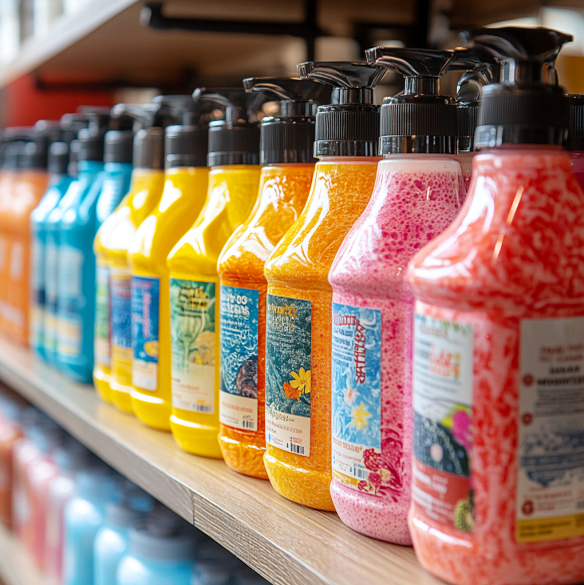Views: 0 Author: Site Editor Publish Time: 2025-03-21 Origin: Site









The paper used for labels plays a crucial role in various industries, from retail to manufacturing. Understanding the different types of Paper Label Material is essential for businesses aiming to enhance product presentation and meet specific labeling requirements. This article delves into the various kinds of paper used for labels, examining their properties, applications, and the technological advancements that are shaping the future of labeling materials.
Paper label materials vary widely based on their composition, finish, and intended use. The most common types include matte paper, glossy paper, thermal paper, and specialty papers like kraft and recycled materials. Each type offers distinct advantages and is selected based on factors such as durability, aesthetic appeal, and cost-effectiveness.
Matte paper labels are known for their non-reflective surface, which makes them ideal for applications where readability under various lighting conditions is crucial. They are commonly used in the food and beverage industry, providing a classic and elegant look to product packaging.
Glossy paper labels have a shiny surface that enhances color vibrancy, making them suitable for high-quality image printing. These labels are often used in cosmetic and gourmet food packaging, where attracting consumer attention is essential.
Thermal paper labels are utilized in applications requiring quick and easy printing, such as receipt printing and shipping labels. They are sensitive to heat and do not require ink, making them cost-effective for businesses with high-volume labeling needs.
Beyond standard paper labels, specialty materials offer unique characteristics for specific applications. These include materials like kraft paper, recycled paper, and synthetic papers designed for durability and environmental sustainability.
Brown Paper Label Material, often known as kraft paper, is appreciated for its natural and rustic appearance. This material is popular among eco-friendly brands and is frequently used for organic products, artisanal goods, and environmentally conscious packaging.
With the growing emphasis on sustainability, recycled Paper Label Material has become increasingly important. These labels are made from post-consumer waste and help reduce environmental impact. Companies use recycled labels to showcase their commitment to sustainability.
In the fashion industry, clothing Paper Label Material is selected for durability and texture. These labels often require a material that can withstand handling and provide a premium feel, aligning with the brand's image and quality standards.
The labeling industry has witnessed significant technological advancements, particularly in printing techniques and material science. Innovations such as water-resistant coatings, pressure-sensitive adhesives, and eco-friendly inks have expanded the possibilities for paper labels.
Businesses increasingly demand custom Paper Label Material to differentiate their products. Customization allows for unique sizes, shapes, and finishes, providing a competitive edge in the marketplace. Advanced printing technologies enable high-resolution graphics and intricate designs on labels.

Paper labels are indispensable across multiple industries due to their versatility and cost-effectiveness. They serve not only as a medium for product information but also as a marketing tool that can influence consumer purchasing decisions.
In the food and beverage sector, labels must meet stringent regulatory standards while appealing to consumers. The choice of paper label material affects both compliance and shelf appeal. Materials must accommodate various packaging types and withstand different storage conditions.
Labels in the pharmaceutical industry require high levels of accuracy and clarity. The paper used must be suitable for fine print and resistant to environmental factors that could compromise legibility. Security features are also integrated into labels to prevent tampering and counterfeiting.
In retail and logistics, labels facilitate inventory management and product tracking. Thermal paper labels are commonly used for barcodes and shipping information due to their efficiency and ease of use.
The environmental impact of label materials has become a critical consideration for both manufacturers and consumers. The adoption of sustainable materials like recycled paper and the development of biodegradable adhesives are steps toward reducing the ecological footprint of labeling.
Sustainable sourcing involves procuring paper from responsibly managed forests and ensuring that the production processes minimize environmental harm. Certifications such as FSC (Forest Stewardship Council) provide assurance of sustainable practices.
Research into alternative fibers, such as hemp and bamboo, offers potential for more sustainable paper label materials. These alternatives grow faster than traditional wood sources and require fewer resources, contributing to a lower environmental impact.
Foshan LabelKing Technology Co., Ltd., established in 2016, exemplifies innovation in paper label materials. Specializing in the production and sales of self-adhesive label materials, LabelKing has developed advanced production lines with a daily capacity of 1 million square meters. The company offers a diverse range of products, including Paper Label stickers Material, catering to various industry needs.
With numerous high-tech enterprise certificates and multiple patent certifications, LabelKing demonstrates a commitment to quality and innovation. Their focus on research and development has positioned them as a leader in the self-adhesive label industry.
The future of paper label materials lies in the balance between functionality, aesthetics, and sustainability. Emerging technologies and materials will continue to shape the industry, offering labels that are smarter, more interactive, and environmentally friendly.
Integration of technology into labels, such as QR codes and NFC chips, allows consumers to engage with products digitally. While currently more common with synthetic materials, advancements may enable these features to be incorporated into paper labels effectively.
The development of biodegradable and compostable labels addresses the end-of-life impact of labeling materials. These labels decompose naturally without leaving harmful residues, aligning with global efforts to reduce waste.
Understanding the various types of paper used for labels is essential for businesses seeking to enhance their product packaging and meet industry-specific requirements. From custom Paper Label Material options to sustainable solutions like recycled Paper Label Material, the choices available cater to a wide range of needs and preferences. Companies like LabelKing are at the forefront of providing innovative and high-quality label materials. As technology and consumer expectations evolve, the paper label industry will continue to adapt, offering smarter, more sustainable, and more engaging labeling solutions.